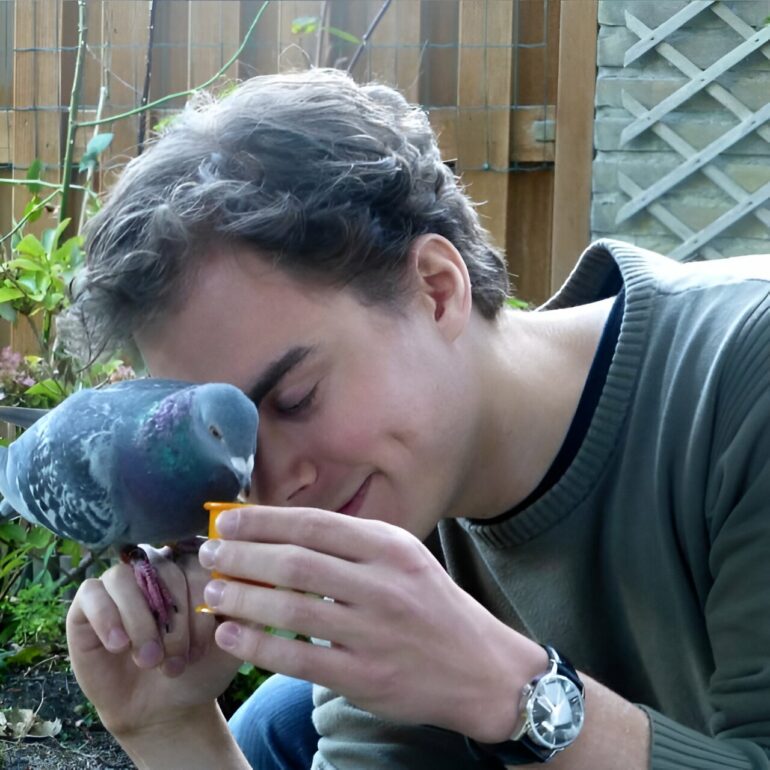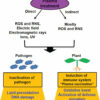A new study conducted by Dr. Edwin Dalmaijer, a cognitive neuroscientist at the University of Bristol, UK, looked at the social influences on pigeon flight routes. Comparing the flight patterns of pairs of pigeons to a computer model, the researcher found that flight paths are improved as younger birds learn the route from older birds and also make route improvements, leading to overall more efficient routes over generations. The study is published June 6 in the open-access journal PLOS Biology.
Pigeons are known for their ability to travel long distances to specific locations. Like many birds, they navigate using the sun and by sensing the earth’s magnetic field. Though these senses help pigeons find their bearings, they do not usually generate the most efficient routes.
Dr. Dalmaijer gathered data from previously published studies where pigeons that were familiar with a route were paired with pigeons that had not flown the route before. These data demonstrated that when the inexperienced pigeon is introduced, the pair flies a more direct route to their destination. However, these previous studies could not determine how the paired birds generate more efficient routes.
Dr. Dalmaijer compared the pigeon flight data to a computer model that prioritized four main factors. These four factors represent what might be involved in choosing a flight path with minimal cognition, including: direction to the goal, representing the bird’s internal compass; proximity to the other pigeon; the remembered route; and general consistency, since the birds are unlikely to make erratic turns.
In the model, the simulated birds, referred to as “agents,” made over 60 journeys. Once every 12 journeys, one of the agents was replaced with an agent that had not made the trip before, simulating a young bird.
This resulted in a generational increase in the efficiency of the flight routes. These improvements are similar to those seen in the real-life data from pigeon pairs, though the pigeon data did not match the most optimal version of the model, likely because pigeons are influenced by additional factors that the model could not account for.
When some of the parameters of the model were removed, such as memory of the route or the desire to be near the other pigeon, there was no generational improvement. “These results suggest that stepwise improvement between generations can occur when individuals simply seek proximity to others,” Dr. Dalmaijer said.
The model demonstrates learning in both directions. As expected, the younger agent benefits from the older agent by learning the route. However, it also shows that the older agent benefits from the younger agent. Since younger agents are not following an internal route, they are more oriented to the final destination.
The agents’ desire for social proximity between the two balances these draws, leading to an overall more efficient route. Additionally, these findings may be applicable to other species beyond pigeons, such as ants and some types of fish, which also make journeys based on memory and social factors.
Dr. Dalmaijer adds, “I grew up in the Netherlands, in a city where pigeons constantly walk into oncoming bicycle traffic, so I don’t have the highest opinion of pigeon intellect.
“On the one hand, this study vindicates that, by showing the gradual improvement in route efficiency also emerges in ‘dumb’ artificial agents. On the other hand, I have gained a huge respect for all the impressive work done in pigeon navigation and cumulative culture, and even a little bit for the humble pigeon (as long as they stay away from my bike).”
More information:
Dalmaijer ES, Cumulative route improvements spontaneously emerge in artificial navigators even in the absence of sophisticated communication or thought, PLoS Biology (2024). DOI: 10.1371/journal.pbio.3002644
Provided by
Public Library of Science
Citation:
Computer model demonstrates desire for social proximity improves flight routes among pigeons (2024, June 6)



